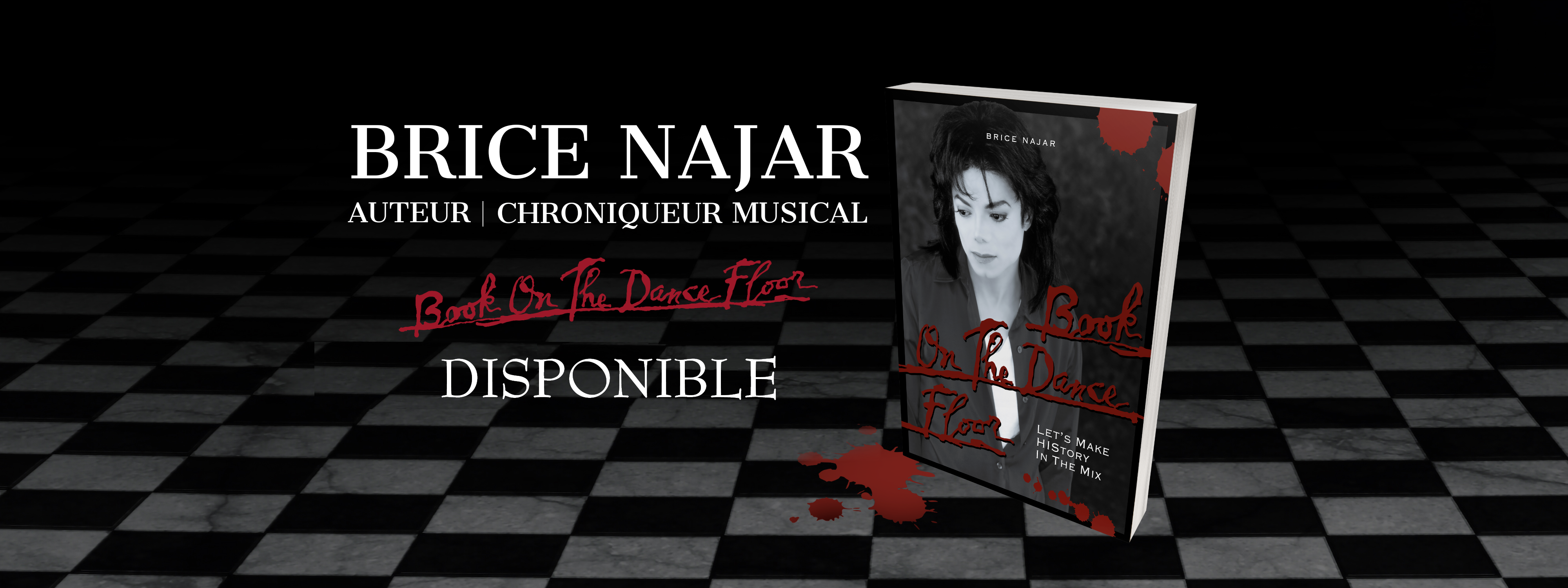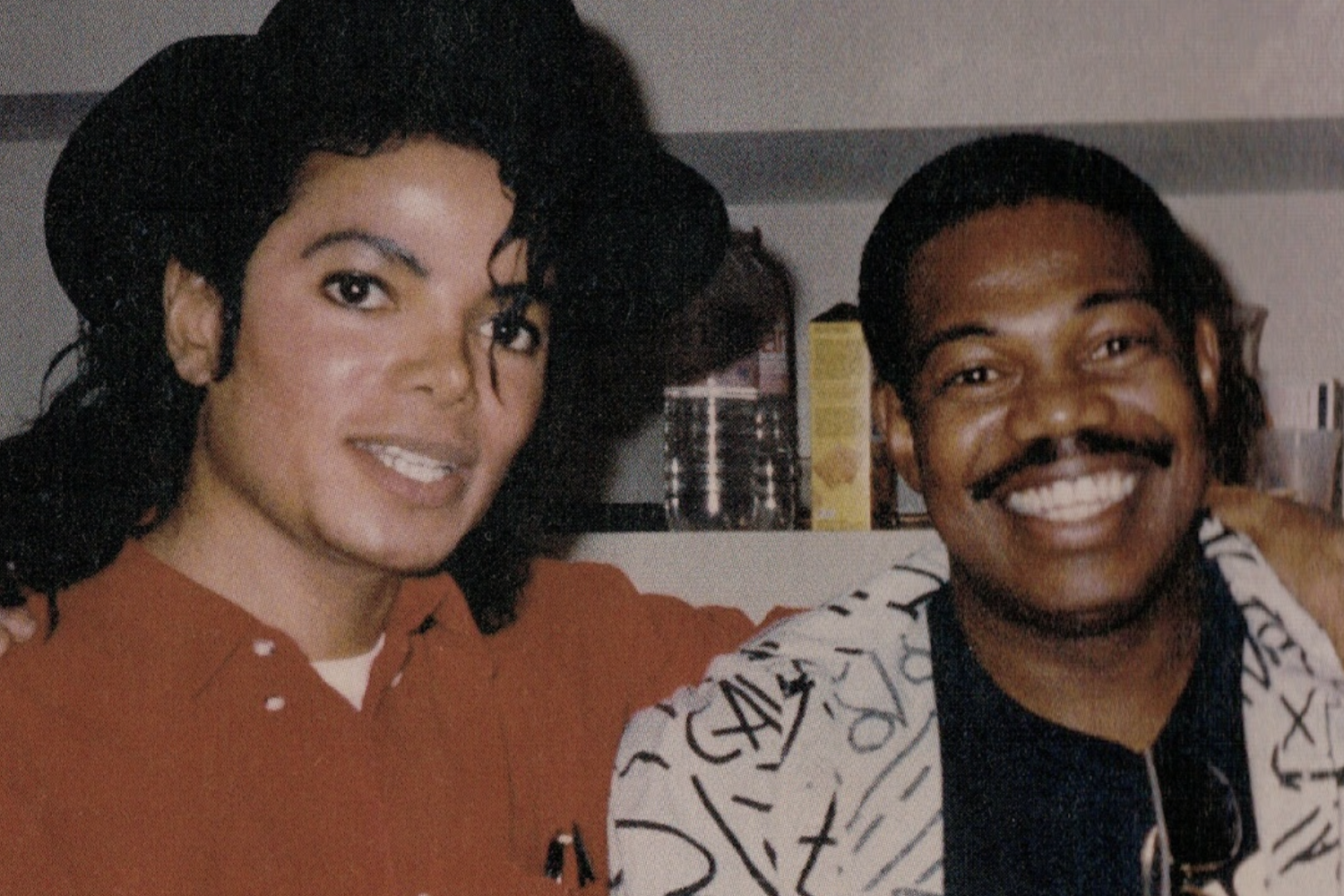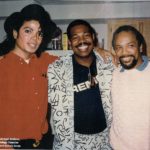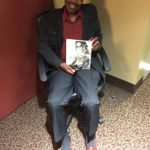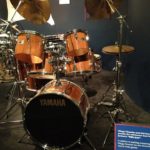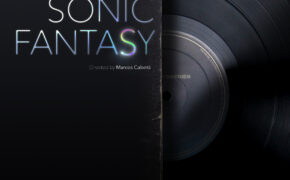Hommage à Ndugu Chancler / Tribute to Ndugu Chancler (1952-2018)
Cher Ndugu,
Ta disparition à l’âge de 65 ans va nous laisser un grand vide mais nous aurons à cœur de ne pas t’oublier car ton art est immortel. Nous n’avons pas fini d’écouter ton groove tellement tu auras laissé ton empreinte à coup de baguettes et de grosse caisse dans l’histoire de la musique.
Il est vrai que cela ne peut pas être une coïncidence que tu fus l’un des batteurs les plus demandés en studio tant les professionnels ont pu apprécier ton talent. A ce propos, je garde en mémoire les mots de Bruce Swedien à ton sujet, lors de la projection du documentaire « King Of Sound » au mois de novembre dernier : « Le batteur que nous avons choisi était Leon Chancler, plus connu sous le nom de Ndugu dans le milieu. Un incroyable batteur, au son puissant et au groove infini ! »
Une riche discographie qui souligne ta polyvalence dans la soul, la funk et le jazz t’amenant à collaborer avec divers artistes comme George Duke, John Lee Hooker et Santana, sans oublier Quincy Jones. Le riche univers musical de ce dernier t’a également conduit à croiser les chemins de gens comme James Ingram ou Franck Sinatra, mais ne m’en veux pas de retenir surtout tes collaborations avec Michael Jackson. Loin de moi l’idée de vouloir occulter ces autres travaux, mais j’espère que tu avais ressenti toute l’affection que je porte à l’univers musical du leader des Jackson 5.
J’ai tellement scruté les livrets des albums du Roi de la Pop depuis l’enfance que je ne pouvais ignorer ton existence. Au sujet de Thriller, l’indisponibilité de John JR Robinson, le batteur de « Off The Wall », avait permis ta présence sur l’album le plus vendu de tous les temps, Quincy te demandant de participer aux titres Soul/Funk tandis que Jeff Porcaro complétait la track-list avec des compositions Pop/Rock et d’autres ballades. Je réalise alors que les deux batteurs de cet album mythique ne sont plus, maintenant que tu as rejoint celui de Toto, disparu en 1992.
Nous pouvons donc t’écouter sur « Hot Street » et « Baby Be Mine », les deux premières chansons des sessions de l’album même si la première est restée au stade de démo non retenue pour cet opus. Bien évidemment, je ne vais pas vouloir refaire l’HIStoire : qui serais-je pour oser contester les choix d’un album parfait ?
« Pretty Young Thing » et « Thriller » s’ajoutent à cette liste et au sujet de la chanson-titre du disque, je fais davantage confiance à tes confidences qu’au livret qui ne mentionne même pas ta présence. Ton anecdote sur ta prestation lors de l’introduction de cette oeuvre me l’a faite redécouvrir malgré les milliers d’écoutes précédentes. De quoi accentuer ma peine de savoir que tu ne nous raconteras plus tes souvenirs en studio alors que tout cela est si passionnant.
« Pro Tools n’existait pas et nous ne pouvions pas déplacer les sons : il fallait que tout soit uniforme et synchro avec la boîte à rythmes. Je vais vous donner un truc, si vous voulez entendre la batterie seule : écoutez bien l’intro de « Thriller ». Il y a deux mesures qui sont jouées uniquement par ma batterie sans la boîte à rythmes. Le contraste de son est clair. Ensuite, il y a deux autres mesures ensemble et individuellement. »
Sans oublier le mythique « Billie Jean » : dire que la majorité de la planète s’est déchainée sur les pistes de danse avec cette chanson! Dès sa conception, tu as ressenti quelque chose de spécial en elle, comme tu me l’avais raconté. C’était tellement touchant à entendre :
« J’ai vraiment le sentiment de faire partie de l’histoire. Je suis heureux d’être associé à l’une des plus grandes chansons de pop de l’histoire de la musique. Le soir où nous avons enregistré « Billie Jean », c’était l’anniversaire de mon épouse de l’époque et il y avait donc une soirée chez moi. Mais j’étais en retard puisque j’enregistrais « Billie Jean » ! Quand je suis enfin arrivé, les gens m’ont fait la remarque et j’ai dit : « Oui… mais je pense que je viens d’enregistrer l’un des plus grands morceaux de ma vie ! » Je sentais bien qu’il y avait quelque chose de spécial avec cette chanson : elle était tellement hypnotisante !… »
Il y avait les sentiments et le feeling mais tout cela était lié à ta technique et c’est pour cela que j’avais également apprécié ton témoignage au sujet du matériel utilisé pour ce hit légendaire :
« Comme je faisais des sessions, j’avais trois sets de batterie. Celui que j’ai utilisé sur cette session est au musée Rhythm Discovery d’Indianapolis : c’est un set Yamaha très particulier. J’avais deux kits faits avec du bois brésilien appelé Jacaranda, donc c’est une batterie entièrement en bois. J’avais quelques prototypes d’égaliseurs de batterie pour la caisse claire. Celle-ci était davantage un tambour de fanfare qui donnait ce son sourd au niveau de la peau de frappe. Pour le reste, c’était juste une batterie classique avec les cymbales Paiste que j’ai utilisées sur la plupart des partitions : les 602 et les 2000. Pour « Billie Jean », j’ai enlevé les toms et j’ai enregistré avec seulement la grosse caisse, les caisses claires et le charleston (ou hit-hats). Bruce Swedien m’a installé sur une estrade et a mis sur la grosse caisse une sorte de couverture-sourdine dans laquelle il a inséré le micro. Il amenait beaucoup de son équipement personnel en studio, tels que les micros, donc ceci faisait partie de son arsenal. Les parties de batterie ont donc été enregistrées sur une console 16 pistes ce qui fait qu’il y avait peut-être trois à cinq pistes de grosse caisse et autant de caisse claire. On pouvait donc entendre chaque piste séparément car Bruce utilisait différents micros et c’est ainsi qu’il obtenait ce son. Ensuite, il mélangeait tout ça avec le son de la boîte à rythmes avec laquelle je jouais tout du long également. »
Au final, le studio de Westlake aura donc été ton aire de jeu avec Michael Jackson, Quincy Jones et Bruce Swedien en 1982 et tu confirmeras cet état de fait cinq années plus tard lors de ta prestation sur le titre « I Just Can’t Stop Loving You » de l’album « Bad ». Il s’agit-là de la ballade emblématique de ce disque et tu as ainsi conjuré le sort de ne pas avoir oeuvré dans ce domaine lors des sessions de l’album précédent démontrant que ta technique est aussi efficace dans la finesse et la subtilité.
Il ne pouvait donc en être autrement que tu sois crédité dans la compilation de l’album « HIStory » et tu es justement le premier à t’illustrer lors de l’introduction de « Billie Jean ». C’est dans cette optique que je souhaitais avoir ta participation pour mon projet de livre « Let’s Make HIStory ». Cela me semblait comme un rêve de pouvoir respecter l’esprit original d’un album dans un livre et par ton accord tu as exaucé cette volonté. J’ai d’ailleurs souvent expliqué cette démarche dans ma promotion, tellement cet exemple à ton sujet est saisissant.
Il va donc de soi que je garderai toujours en souvenir nos mails pour mener à bien ce projet ainsi que cette conversation téléphonique. Comme convenu ce jour-là, Laetitia et moi t’appelions via ton compte Skype, mais sans réponse de ta part et ne voulant pas céder à la panique, nous prenions l’initiative de t’appeler directement sur ton téléphone. Et c’est ainsi que tu nous remercias de l’avoir fait car tu ne parvenais pas à te connecter. C’était pourtant bien à nous de le faire, car tu prenais déjà de ton temps entre deux cours à l’université où tu transmettais ta passion de la musique aux jeunes générations. J’ai découvert alors un homme plein de gentillesse et de bienveillance à la hauteur de son talent.
Une fois le projet finalisé, ce fut un honneur de t’envoyer le livre à ton domicile et de recevoir la photo où tu posais avec l’ouvrage. J’ai conscience que tout cela n’est qu’une goutte d’eau dans ta fabuleuse carrière, mais j’ai cette fierté d’avoir pu collaborer avec toi et toucher l’HIStoire du bout des doigts…
Repose en paix, l’artiste !
Dear Ndugu,
With your passing at the age of 65, the world is going to feel empty but we shall have our heart set on remembering you because your art is immortal. We are far from being done with listening to your groove since you left your mark on the history of music through chopsticks and bass drum.
It is no coincidence that you were among the most popular studio drummers for professionals really appreciated your talent. By the way, I shall forever keep Bruce Swedien’s words in mind, in the documentary « King Of Sound » we screened for the first time last November : « The drummer that we chose to play this piece of music (« Billie Jean ») was Leon Chancler, or as he was known in the industry, « Ndugu ». Unbelievable drummer ! Powerful sound that would groove for ever ! »
You have such a rich discography emphasizing your versatility in soul, funk and jazz that led you to collaborate with various artists like George Duke, John Lee Hooker and Santana, not to mention Quincy Jones. The latter’s musical world also allowed you to cross the paths of people like James Ingram or Franck Sinatra, but please, don’t blame me if I particularly remember your collaborations with Michael Jackson. Far be it from me to try to eclipse those other works, but I hope that you felt all the affection I have for the musical world of the leader of the Jackson 5.
Since I was a child, I have scrutinized the King of Pop’s albums booklets so many times that I could not ignore your existence. On « Thriller », it was John JR Robinson’s unavailability (after he had previously played on « Off The Wall »), that allowed you to take part in the best-selling album of all times when Quincy asked you to play on Soul and Funk tracks while Jeff Porcaro would play on Pop and Rock tracks and some ballads. Today I realize that both drummers on that mythical album are no longer with us, now that you have joined Toto’s one who had been waiting for you since 1992.
So we can hear you on « Hot Street » and « Baby Be Mine », the first two songs of the album sessions, even though the first one remained a demo and never made it to the record. Of course, I am not going to rewrite HIStory – I am nobody to dare challenging the choices that were made on that perfect album.
« Pretty Young Thing » and « Thriller » complete the list, and regarding the title-track, I trust your confidences more than the booklet that does not even mention your presence. The anecdote you told me about your performance on the intro of the song made me rediscover it after playing it thousands of times. It saddens me all the more to know that you will never tell those studio stories again that were so exciting to hear…
« Again, there was no Pro Tools, so we couldn’t move things : it had to be plain, precisely with the drum machine. Let me give you a tip : if you want to hear the drums by themselves, in the intro to Thriller, there are about two bars done with my drums without the drum machine and you can hear the contrast in sounds. There are two other bars coming together and by themselves. »
Not to mention the legendary « Billie Jean » – think about the fact that most people on the planet went crazy with this song on the dance floors ! From the beginning, you had felt something special with it, as you told me. It was a very moving moment :
« I feel like I’m a part of history. I feel great to have been associated with one of the biggest pop song records in the history of music. The night that we recorded Billie Jean, there was something special for me because that was my ex-wife’s birthday and I had a birthday party going on at home that I was late getting to because I was recording Billie Jean ! Then, when I got home, people were saying : « Well, you’re late to the party ! » And I said : « Yes… but I think I’ve just recorded one of the greatest things ever in my life ! » I had that feeling, you know, it just felt that special to me because there was something hypnotic about that song !… »
There was the feeling, of course, but it was all about your technique too and that’s why I also really appreciated listening to your account about the equipment you used for this legendary hit :
« Because I was doing sessions, I had three drum kits. The drum kit I used on that session is in a museum called Rhythm Discovery in Indianapolis : it’s a special made Yamaha drum kit. I had two kits made from this Brazilian wood called Jacaranda wood, so it’s an all wooden drum kit. I had some prototype drum EQs on the snare drum which is more like a marching drum which gave it that top muted sound. The rest were just my normal drums with the Paiste cymbals that I used on most of the record scores : the 602 and 2000. For Billie Jean, I actually took the tom-toms off the drums and I only recorded with kick drums, snare drums and hi-hat. Bruce Swedien put me on a platform and he put a special blanket muffler over the bass drum and stuck the microphone inside. He would bring up a lot of his own equipment, like microphones, to the sessions, so that was part of Bruce’s arsenal. The drums were recorded on a 16-track machine, so I had maybe 3 to 5 tracks of bass drum and 3 to 5 tracks of snare drum. Then you could hear each track differently because Bruce used a few different mikes and that’s how he got that sound. Then he blended that with the sound of the drum machine. So I was playing along with the drum machine as well. »
Basically, we can say that Westlake Studios were your playground with Michael Jackson, Quincy Jones and Bruce Swedien in 1982 – something that you would confirm five years later with your performance on « I Just Can’t Stop Loving You » for the « Bad » album. The iconic ballad of the record allowed you to prove that your technique was also effective through sharpness and subtlety and also to ward off fate of not doing it on the previous album sessions.
So it could not be otherwise that you are credited on the « HIStory » album compilation since you are precisely the first musician to be heard on the intro of « Billie Jean ». With this in mind, I decided to ask you to take part in my book « Let’s Make HIStory ». Getting the opportunity to follow the original concept of the album in a book seemed like a dream to me and you made it happen when you agreed to talk to me. And I have often told people about this approach during the promotion of the book by illustrating it with that amazing experience I had with you.
It goes without saying that I will always remember the emails we sent each other to carry out the project, and our unique phone conversation. As agreed, Laetitia and I called you one day through Skype, but when you didn’t answer, we decided not to panic and we took the initiative to call you directly on your cell phone. There, you thanked us many times for doing so because you just could not seem to log in. Well, it was definitely up to us to reach you since you were taking of your time between two courses at university where you passed on your passion for music to younger generations. And then I met a man who was as kind and benevolent as he was gifted.
Once the project was finalized, it was an honor to send you a copy of the book at your private home and to receive a picture of yourself with it in return. I am well-aware that this is just a drop in your fabulous career but I am proud anyway to have been able to collaborate with you and touch on HIStory…
Hats off to the artist !
